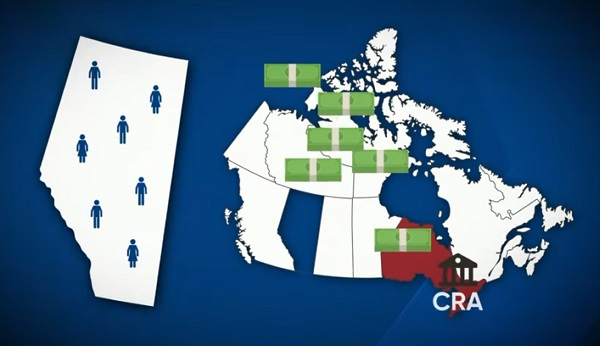Alberta
Open letter to Canada’s Premiers calling for pivot in response, end to lockdowns

Premiers,
It has been over one full year since the declaration of the Pandemic. SARS CoV-2 has been in Canada much longer than that, as you well know.
You are responsible for the response in each of your jurisdictions. While the Medical Officers of Health (MOH) are equally responsible for the advice they have given, you personally were elected to lead. They were not.
Your own statistics prove that for people under the age of 60, SARS CoV-2 is not something to be feared. In one full year, people under the age of 60 are twice as likely to die from a heart disease. For people 20 – 40 years old, they are five times more likely to die in a car accident. Worldwide 2.54 million people die from Pneumonic annually. SARS CoV-2 has killed under 2 Million in a year. The risk from SARS CoV-2 has been widely exaggerated, by you, your MOH and the media.
https://www.frontiersin.org/articles/10.3389/fpubh.2021.625778/full
For people over 60, your approach has failed our seniors.
Canada has ranked last in the Organization of Economically Developed Countries (OECD) in care of those most at risk to SARS CoV-2. Over 96% of all reported SARS CoV-2 deaths were in our seniors. Even Canada’s Chief Medical Officer of Health admitted this is Canada’s shame.
Your use of “lockdowns” did not save over 21,000 of our seniors. It failed them.
The use of Non-Pharmaceutical Interventions (NPIs) which we now call “lockdowns” was known to have little effect on the spread of infectious diseases long before SARS CoV-2 arrived. In fact, the World Health Organization (WHO) assembled the best infectious disease doctors in the world to write the 2019 version of “Non-Pharmaceutical Public Health Measures”. If you read the document, for a Pandemic of the severity of SARS CoV-2, most of these measures were not recommended for use. Yet we used almost all of them.
https://apps.who.int/iris/bitstream/handle/10665/329438/9789241516839-eng.pdf
Top infectious disease doctors in the world have proven in repeated detail peer reviewed research papers all over again that “lockdowns” do not have significant impacts on either the spread or deaths for SARS CoV-2. Yet you and the media constantly tell us they do. But one of the many in depth studies found: “While small benefits cannot be excluded, we do not find significant benefits on case growth of more restrictive NPIs. Similar reductions in case growth may be achievable with less‐restrictive interventions”.
https://onlinelibrary.wiley.com/doi/10.1111/eci.13484
What is also know is that “lockdowns” cause terrible collateral damage. The damage to Canadians Mental Health, Societal Health, Children’s Education and Social Development, Patients with other Severe Illnesses and to our National Economy (Federal and Provincial/Territorial) will continue, until you remove and promise never to inflict “lockdowns again. These impacts and deaths seem not to be considered in any cost benefit analysis by you or your MOH.
Many of the world’s experts have tried to help target the response to SARS CoV-2 to save the most vulnerable, while minimizing the effects on the rest of our population. You have ignored these experts. In fact, most of these experts have been completely censored by you, your MOH and the media.
Please read the attached Paper, “One Year of COVID-19 Pandemic Response in Canada”. The Paper states what we had collectively planned to do in a Pandemic, what we have done, and how to pivot out of our failed response.
It is time to stop.
Listen to all expert voices.
Pivot.
Thank you for your time.
David Redman
Lieutenant Colonel (Retired)
Former Head of Emergency Management Alberta
One Year of COVID-19 Pandemic Response in Canada March 31, 2021
David Redman
Former Head of Emergency Management Alberta
Emergency Management
Pandemics happen continuously. Since 1955, this is the world’s fifth pandemic. In the next fifty-five years there is going to be five more. We have never responded to a pandemic like we responded to COVID-19.
It must be clear that a pandemic is not a Public Health Emergency, it is a Public Emergency because all areas of society are affected: public sector, private sector, not- for-profit sector, and all citizens.
In Canada, we have an Emergency Management Process that we normally use in a pandemic. We have pre-written Pandemic Response plans. These plans were written incorporating the hard lessons learned from previous pandemics.
Part of the lessons learned from previous pandemics is contained in the World Health Organization (WHO) “Non-pharmaceutical public health measures for mitigating the risk and impact of epidemic and pandemic influenza” dated 2019.
https://apps.who.int/iris/bitstream/handle/10665/329438/9789241516839-eng.pdf
This document included the world’s best studies and information on the use of 15 separate non-pharmaceutical interventions (NPIs). The use of these NPIs was discussed in the development of the existing Provincial Plans.
The 2019 WHO document was known, or should have been known, by all Medical Officers of Health in Canada. The use of each of the NPIs was dependant on the severity of the pandemic. Even in a High or Extraordinary Pandemic the use of all or most of these NPIs at the same time was not envisioned.
Prior to the use of each NPI, the Federal and Provincial/Territorial governments needed to demonstrably justify how each NPI would protect the life of Canadians. Some of the NPIs were not recommended for use in any pandemic, including:
- Contact Tracing (not recommended after first two weeks)
- Quarantine of Exposed Individuals
- Entry and Exit Screening
- Border Closures
One Year of COVID-19 Pandemic Response in Canada March 31, 2021
David Redman
Former Head of Emergency Management Alberta
Some of the NPIs were recommended for use only as a last resort, including: • Workplace Measures and Closures
Despite this, they were used as a first resort.
Some NPIs were not recommended for a pandemic with the severity of COVID-19, including:
- School Measures and Closures
- Face Masks for Public These recommendations were ignored.The lack of any attempt to publicly demonstrate a cost benefit analysis based on life and impact on lives shows a complete disregard for “Due Diligence” by both our Medical Officers of Health (MOH) and our Premiers.
In summary on NPIs, the collateral damage from the use of each NPI needed to be justified in a cost benefit analysis, showing not only what life saving could be expected, but what the short-term and long-term impact on lives would be. Further, it needed to be demonstrably shown why the WHO recommendations were ignored. This was never done for any of the NPIs invoked.
The aim of the pre-written pandemic plans is to allow our leaders to rapidly minimize the impact of a new pandemic on our society. The four goals of the pandemic plans are clearly defined:
• Controlling the spread of influenza disease and reducing illness (morbidity) and death (mortality) by providing access to appropriate prevention measures, care, and treatment.
• Mitigating societal disruption in Alberta through ensuring the continuity and recovery of critical services.
• Minimizing adverse economic impact.
• Supporting an efficient and effective use of resources during response and recovery
https://www.alberta.ca/pandemic-influenza.aspx#toc-1
The purpose in writing these plans in advance is to ensure the government could rapidly advise the public of the scope of the new hazard and publicly issue a complete written plan to address it. That way the public can see the entire plan, see the phases of the plan, and all steps that will be taken. The public understands their role in the plan. The response to the pandemic would then be coherent.
This has not happened.
One Year of COVID-19 Pandemic Response in Canada March 31, 2021
David Redman
Former Head of Emergency Management Alberta
The Canadian Response – Not Based on Emergency Management
The Canadian response to COVID-19 has been incoherent, constantly changing, and with no plan. The sole focus on COVID-19 case counts led to a completely flawed response trying to deal only with the first pandemic goal, and failing.
In February and March 2020 we knew that over 95% of the deaths in China and Europe were in seniors, over the age of 60, with multiple co-morbidities.
One Year of COVID-19 Pandemic Response in Canada March 31, 2021
David Redman
Former Head of Emergency Management Alberta
We should have immediately developed options for the protection of concentrations of our seniors over 60 with co-morbidities. Our Long Term Care (LTC) homes should have developed and offered quarantine options, for both the residents and the staff.
In our first full year of COVID-19 in Canada, 96% of our over 22,800 deaths have been in seniors, over the age of 60, with multiple co-morbidities. See Figure 5 in link below, updated weekly by Health Canada.
https://health-infobase.canada.ca/covid-19/epidemiological-summary-covid-19- cases.html
That is over 21,890 deaths. It is likely that thousands of these deaths could have been avoided, as over 80% of the deaths in the first wave occurred in LTC homes.
After one full year, we stand at 73% of the 22,880 deaths in LTC homes, 16,700 of our seniors. Our country ranked last in the OECD for protecting our seniors.
https://www.msn.com/en-ca/news/canada/canadas-nursing-homes-have-worst-record- for-covid-deaths-among-wealthy-nations-report/ar-BB1f76sw
This may have cost $2 billion, but could have saved over 16,700 lives as 73% of Canadian deaths have been in LTC homes in the first year of COVID-19. Instead we locked down healthy Canadians and our businesses and spent well over $240 billion to force over 8 million healthy Canadians to stay at home. The cost mounts daily.
https://www.cbc.ca/news/canada/tracking-unprecedented-federal-coronavirus-spending- 1.5827045
We did not need to follow the failed lock down practice of China or Europe. Lockdowns have not saved 21,890 of our Canadian seniors. We knew who was most at risk and had time to provide the option of quarantine for our seniors, both in LTC homes and in society. Instead, we sacrificed our seniors.
https://www.cnn.com/2020/05/26/world/elderly-care-homes-coronavirus-intl/index.html
In June 2020, the Canadian Institute for Health Information reported that Canada had a higher
proportion of COVID-19 deaths within LTC settings than other OECD countries included in its
comparison. At that time, deaths in Canadian LTCs from COVID-19 were at 81% of the total, while
OECD countries reported LTC COVID-19 deaths of 10-66% (average of 38%) of their totals.
The CBC News analysis has tracked $105.66 billion in federal payments to individuals; $118.37
billion that has gone to businesses, non-profits and charitable organizations; and a further
$16.18 billion in transfers to provinces, territories, municipalities and government agencies.
One Year of COVID-19 Pandemic Response in Canada March 31, 2021
David Redman
Former Head of Emergency Management Alberta
Our leaders and doctors constantly tell us we are in danger of overwhelming our medical system. If we had acted to quarantine our seniors’ long term care facilities, our hospital capacity would not have been challenged, as 71% of our hospital beds and 64% of our ICU capacity continue to this day to be filled with seniors. See Figure 5 in link below, updated daily by Health Canada.
https://health-infobase.canada.ca/covid-19/epidemiological-summary-covid-19- cases.html
We would not have needed to stop other medical procedures.
https://lfpress.com/opinion/columnists/goldstein-canadas-medical-wait-times-longest- ever-because-of-covid-19
We should never have forced healthy medical staff to self-isolate. We should have made rapid testing a priority for all orders of government.
We ignored the other three goals of our pre-existing pandemic plans:
• Mitigating societal disruption in Alberta through ensuring the continuity and recovery of critical services.
• Minimizing adverse economic impact.
• Supporting an efficient and effective use of resources during response and recovery
Ignoring these three goals and following a failed lockdown response has caused massive collateral damage in terms of deaths and long-term effects on our population. Collateral damage, largely ignored by mainstream media, includes but is not limited to:
- Societal health,
- Mental health,
- Other health conditions,
- Children’s education and social development,
- Economic healthhttps://pandemicalternative.org/ https://collateralglobal.org/
We are told that lockdowns (i.e. the persistent use of NPIs) has decreased the spread and deaths from COVID-19. Therefore, it is assumed that the collateral deaths are somehow justified. Nothing could be further from the truth.
One Year of COVID-19 Pandemic Response in Canada March 31, 2021
David Redman
Former Head of Emergency Management Alberta
We knew from the WHO 2019 NPI document cited earlier that the use of most NPIs have little effect on the spread of a virus. It was a lesson learned. Unfortunately, it had to be proved again through studies by some of the best infectious disease doctors in the world. One such study on the spread of COVID-19 is quoted:
“European Journal of Clinical Investigation
Assessing mandatory stay‐at‐home and business closure effects on the spread of
COVID‐19
Methods
We first estimate COVID‐19 case growth in relation to any NPI implementation in subnational regions of 10 countries: England, France, Germany, Iran, Italy, Netherlands, Spain, South Korea, Sweden and the United States. Using first‐difference models with fixed effects, we isolate the effects of mrNPIs by subtracting the combined effects of lrNPIs and epidemic dynamics from all NPIs. We use case growth in Sweden and South Korea, 2 countries that did not implement mandatory stay‐at‐home and business closures, as comparison countries for the other 8 countries (16 total comparisons).
Conclusions
While small benefits cannot be excluded, we do not find significant benefits on case growth of more restrictive NPIs. Similar reductions in case growth may be achievable with less‐restrictive interventions.”
https://onlinelibrary.wiley.com/doi/10.1111/eci.13484
Further comment on deaths from COVID-19 and non-lockdown countries compared to lockdown countries:
https://off-guardian.org/2021/03/23/lockdown-one-year-on-it-doesnt-work-it-never- worked-it-wasnt-supposed-to-work/
COVID-19 has followed the annual seasonal infection curve almost exactly, in spite of lockdowns in our country. Our MOH and Premiers take credit for the seasons when it is in their favour and blame their citizens when seasons dictate “exponential increases”. Our Premiers and MOHs continue to abandon our Emergency Management Process and give in to fear.
One Year of COVID-19 Pandemic Response in Canada March 31, 2021
David Redman
Former Head of Emergency Management Alberta
Conclusions – An Emergency Management and Science Based Way Ahead
Canadians deserve a confidence-based response to the COVID-19 pandemic and all future pandemics. An eight-point process is proposed for the immediate future:
|
1. Releaseacomprehensive,FourGoal-basedPandemicPlan,showingwhatis to be done phase by phase, and what the public’s role is in each phase. |
|
One Year of COVID-19 Pandemic Response in Canada March 31, 2021
David Redman
Former Head of Emergency Management Alberta
7. Geteveryoneunder65withoutpre-existingcompromisedimmune systems, who can and want to work, fully back to work.
8. Continuetovaccinateassafeandeffectivevaccinesbecomeavailable,for the current strain of COVID-19.
Canada’s Response to COVID-19 After One Year
Alberta
Temporary Alberta grid limit unlikely to dampen data centre investment, analyst says
From the Canadian Energy Centre
By Cody Ciona
‘Alberta has never seen this level and volume of load connection requests’
Billions of investment in new data centres is still expected in Alberta despite the province’s electric system operator placing a temporary limit on new large-load grid connections, said Carson Kearl, lead data centre analyst for Enverus Intelligence Research.
Kearl cited NVIDIA CEO Jensen Huang’s estimate from earlier this year that building a one-gigawatt data centre costs between US$60 billion and US$80 billion.
That implies the Alberta Electric System Operator (AESO)’s 1.2 gigawatt temporary limit would still allow for up to C$130 billion of investment.
“It’s got the potential to be extremely impactful to the Alberta power sector and economy,” Kearl said.
Importantly, data centre operators can potentially get around the temporary limit by ‘bringing their own power’ rather than drawing electricity from the existing grid.
In Alberta’s deregulated electricity market – the only one in Canada – large energy consumers like data centres can build the power supply they need by entering project agreements directly with electricity producers.
According to the AESO, there are 30 proposed data centre projects across the province.
The total requested power load for these projects is more than 16 gigawatts, roughly four gigawatts more than Alberta’s demand record in January 2024 during a severe cold snap.
For comparison, Edmonton’s load is around 1.4 gigawatts, the AESO said.
“Alberta has never seen this level and volume of load connection requests,” CEO Aaron Engen said in a statement.
“Because connecting all large loads seeking access would impair grid reliability, we established a limit that preserves system integrity while enabling timely data centre development in Alberta.”
As data centre projects come to the province, so do jobs and other economic benefits.
“You have all of the construction staff associated; electricians, engineers, plumbers, and HVAC people for all the cooling tech that are continuously working on a multi-year time horizon. In the construction phase there’s a lot of spend, and that is just generally good for the ecosystem,” said Kearl.
Investment in local power infrastructure also has long-term job implications for maintenance and upgrades, he said.
“Alberta is a really exciting place when it comes to building data centers,” said Beacon AI CEO Josh Schertzer on a recent ARC Energy Ideas podcast.
“It has really great access to natural gas, it does have some excess grid capacity that can be used in the short term, it’s got a great workforce, and it’s very business-friendly.”
The unaltered reproduction of this content is free of charge with attribution to the Canadian Energy Centre.
Alberta
Alberta Next: Taxation

A new video from the Alberta Next panel looks at whether Alberta should stop relying on Ottawa to collect our provincial income taxes. Quebec already does it, and Alberta already collects corporate taxes directly. Doing the same for personal income taxes could mean better tax policy, thousands of new jobs, and less federal interference. But it would take time, cost money, and require building new systems from the ground up.
-

 Fraser Institute2 days ago
Fraser Institute2 days agoBefore Trudeau average annual immigration was 617,800. Under Trudeau number skyrocketted to 1.4 million annually
-

 MAiD2 days ago
MAiD2 days agoCanada’s euthanasia regime is already killing the disabled. It’s about to get worse
-

 Frontier Centre for Public Policy1 day ago
Frontier Centre for Public Policy1 day agoNew Book Warns The Decline In Marriage Comes At A High Cost
-

 Business2 days ago
Business2 days agoPrime minister can make good on campaign promise by reforming Canada Health Act
-

 Addictions1 day ago
Addictions1 day ago‘Over and over until they die’: Drug crisis pushes first responders to the brink
-

 International2 days ago
International2 days agoChicago suburb purchases childhood home of Pope Leo XIV
-

 Daily Caller1 day ago
Daily Caller1 day agoUSAID Quietly Sent Thousands Of Viruses To Chinese Military-Linked Biolab
-

 Energy2 days ago
Energy2 days agoLNG Export Marks Beginning Of Canadian Energy Independence



